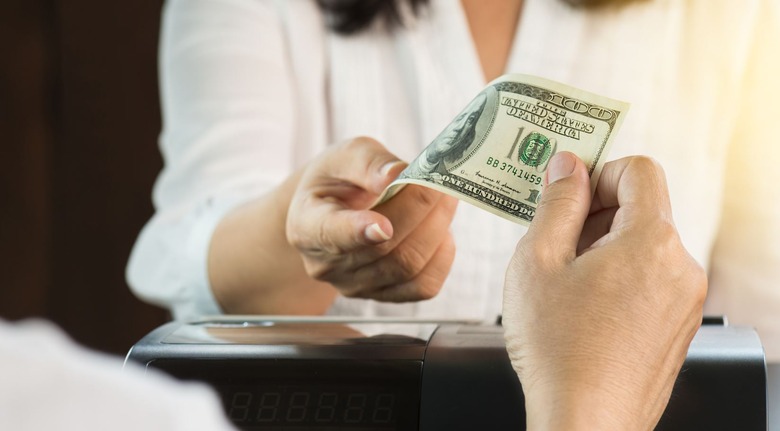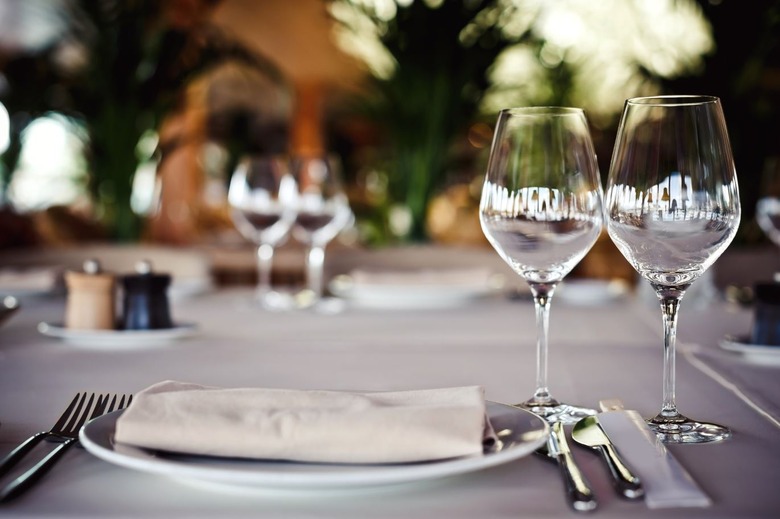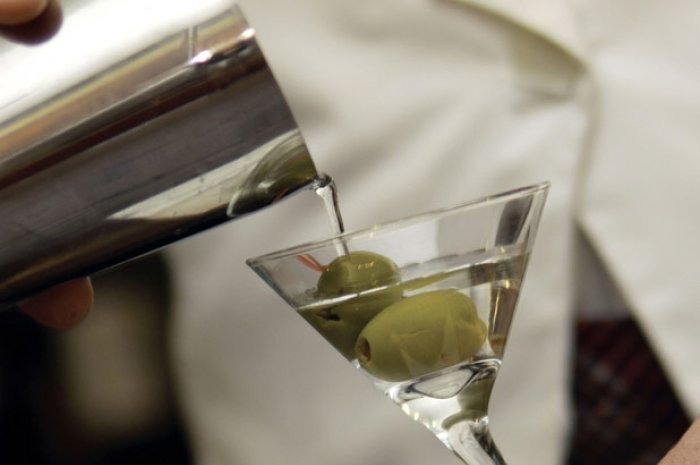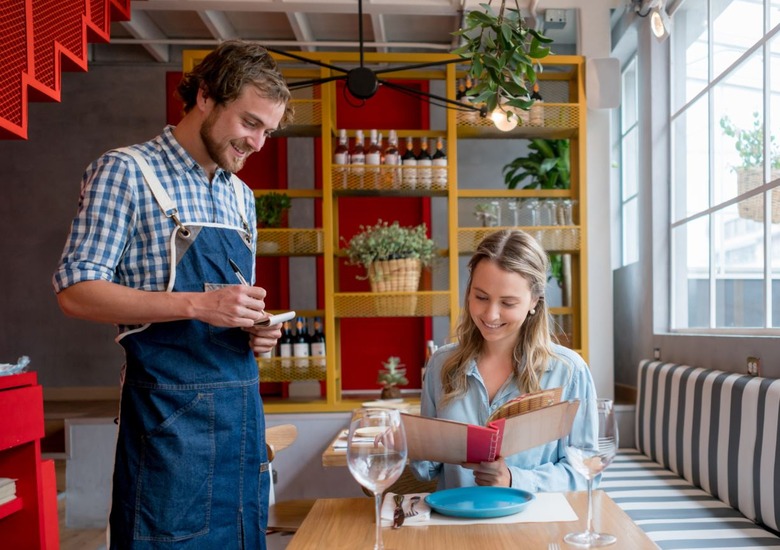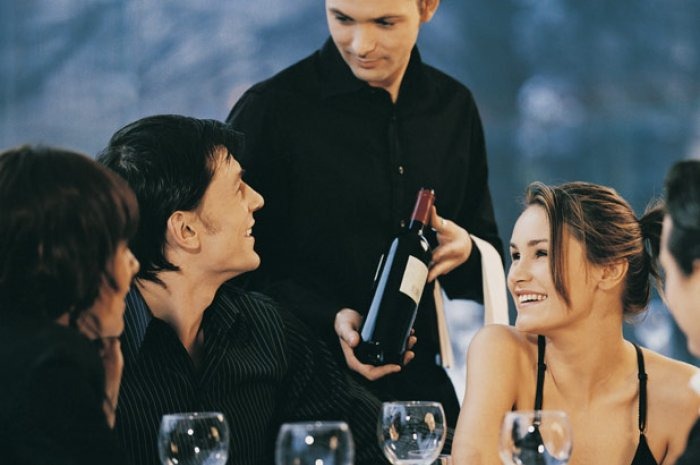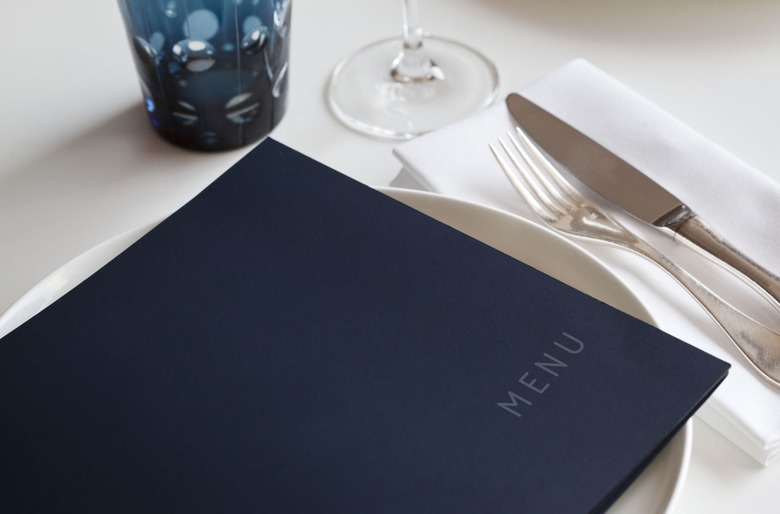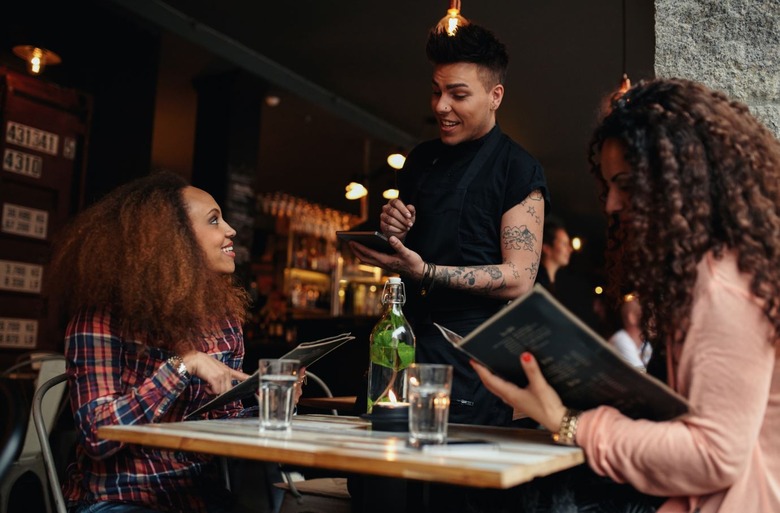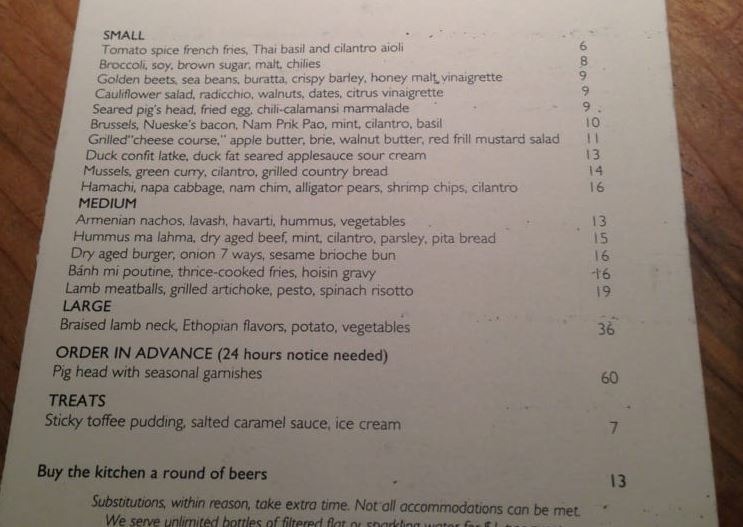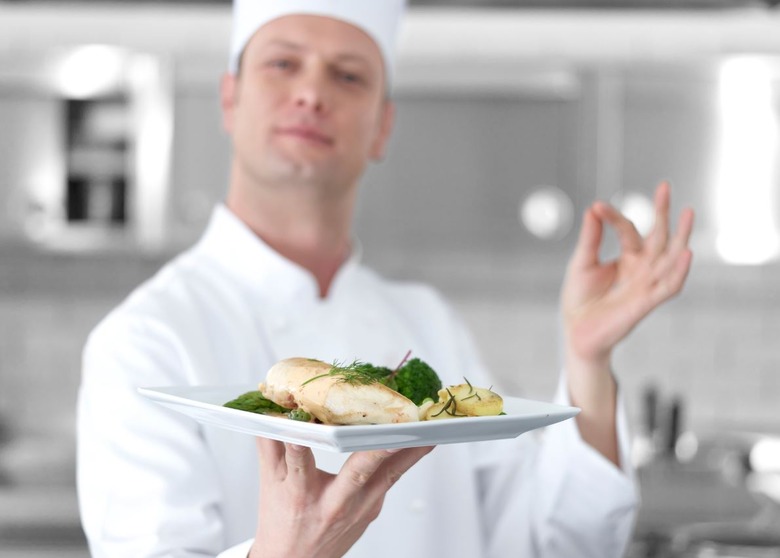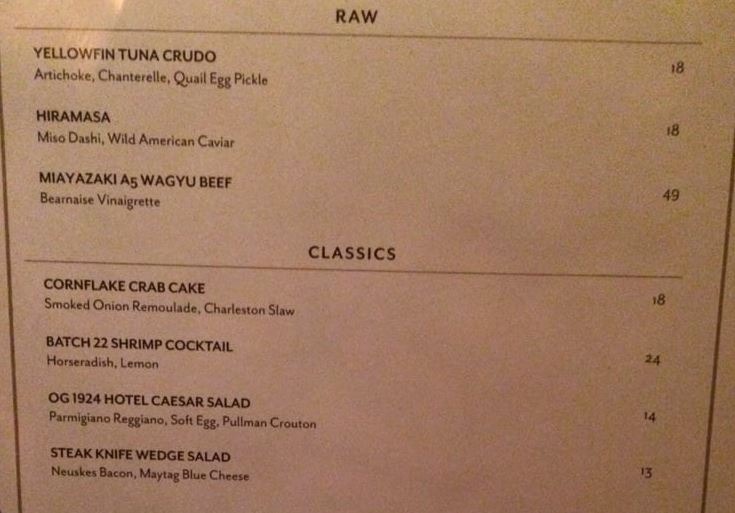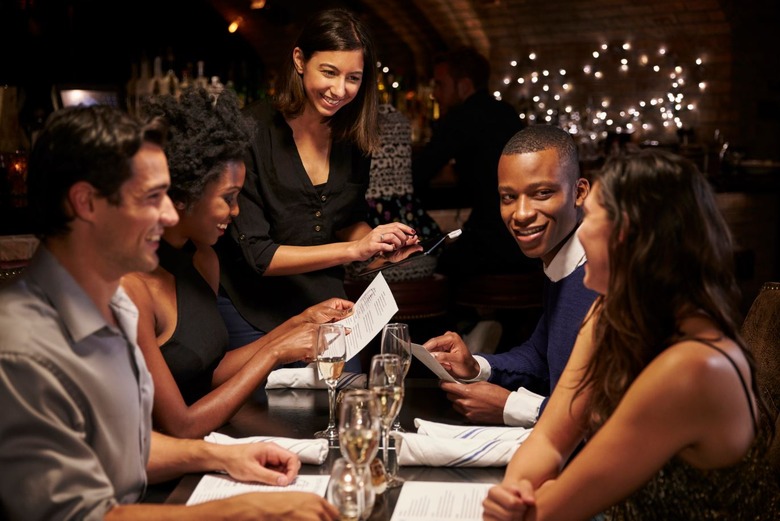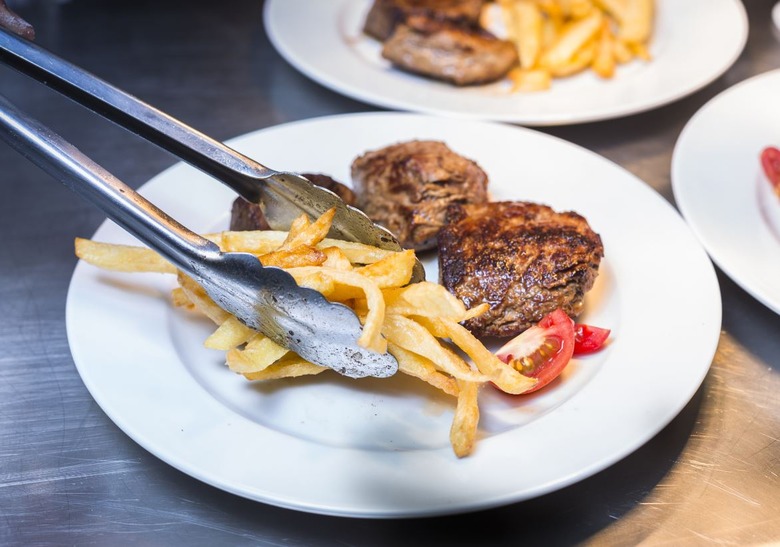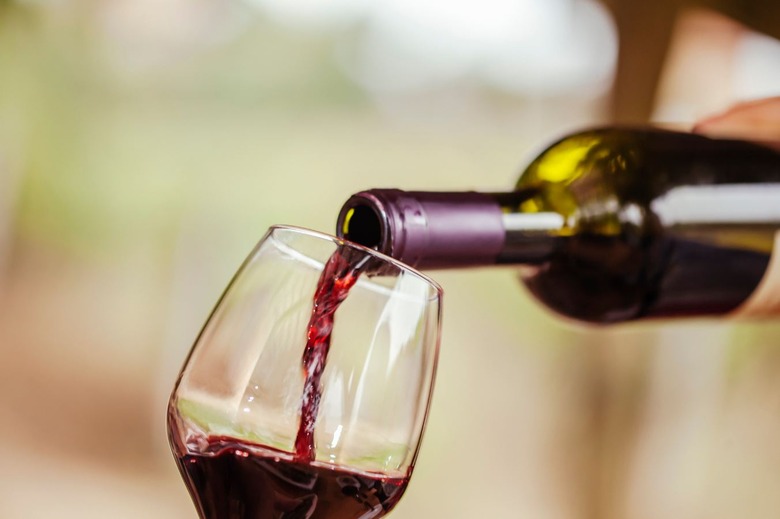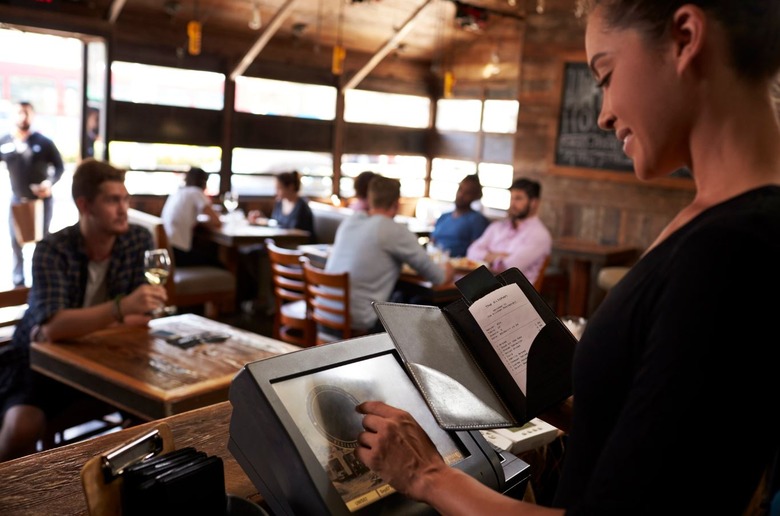17 Ways Restaurants Trick You Into Spending More Money Slideshow
It's always the worst part of a restaurant meal: the moment when the bill arrives. "I didn't realize that drinks would be that expensive!" you might exclaim. Or, "Those appetizers really added up!" Restaurant owners, managers, and servers know that you're in a spendy mood when you go out to eat, and there are plenty of ways (some of which are pretty sneaky) that they can coax you into spending more money than you intended.
Music Choice
According to research by the University of Leicester, a diner becomes more willing to spend money in a restaurant if they're hearing classical music, because it makes them feel richer. Conversely, diners listening to rock or pop spend 10 percent less (unless they're at Babbo).
Offering Expensive Bottles of Water
When you sit down, the first question you're asked is what kind of water you want. You're guided towards ordering bottled water (sometimes they don't even give you the option of tap), and those bottles can be expensive. So unless you're someplace where the quality of the water is extremely questionable, just say, "Tap water is fine."
Asking for Your Cocktail Order Right Away
Servers usually ask if you'd like a cocktail within 10 seconds of greeting customers, so diners are unprepared and haven't even had a chance to look over the cocktail list to get a sense of the prices. Ask for some more time: It'll help slow down the pace of the meal and will give you a chance to realize that a martini will set you back $18.
Not Mentioning the Price of Specials
It's rare when a server actually tells you the price of the daily specials, which more often than not are more expensive than most listed menu items. Always ask the price of a special before ordering it, and also remember that many specials are actually nothing special; some are thrown together using leftover ingredients the kitchen is trying to get rid of, and others are being auditioned before being made a more permanent menu item.
Marking Up the Second-Least-Expensive Wine Bottle
Restaurants rake in the dough from wine sales, and have some sneaky ways to get you to spend more money on wine than you planned. Many diners are too embarrassed to order the least expensive bottle on the list, so they'll opt for the second-least expensive. Restaurants know this, so they tend to place the biggest markup on that very bottle (meaning that its wholesale price very well might be less than the least-expensive bottle). Just order the cheapest bottle; nobody's going to judge you for it.
Power Positioning
The fact that restaurants design their menus with a goal of ripping off their customers is no secret: The National Restaurant Association even provides some sneaky tips on how best to do it right on their website:
"Menu design draws some inspiration from newspaper layout, which puts the most important articles at the top right of the front page. Some restaurants will place their most profitable items or specials in that spot. Elsewhere in the menu, items you want to sell the most should be shown in first and last position. These are typically your biggest sellers, so put careful thought into which items provide your greatest return. Another 'power position' is the inside right page above the center."
Incentivizing Servers
If management is trying to sell a lot of one or two specific menu items (a pricey filet mignon that's about to go bad, for example), they could incentivize servers to push that dish more than others; whoever sells the most servings wins a prize. So be on the lookout for a server who's especially jazzed about one specific dish — and take his or her suggestion with a grain of salt.
Leaving Dollar Signs off of Menus
Cornell University conducted some research about how restaurants use menus to squeeze more money from diners, and their findings are fascinating. For example, they found that the use of dollar signs on a menu triggered negative feelings associated with spending money, so that's why many nice restaurants will just say "29" instead of "$29." Cent values are rarely included, because that's also associated with spending money.
Using Flowery Adjectives and Descriptions
Which sounds more appealing to you: "BBQ chicken breast with vegetables and mashed potatoes" or "seasoned and wood-fire-grilled chicken breast with our signature barbecue sauce, fresh seasonal mixed vegetables, and Aunt Sally's buttery mashed potatoes"? Exactly. Also notice how the mashed potatoes were given a family association; customers are drawn to menu items they believe are based on a family recipe.
The Anchoring Effect
According to Dr. Chuck Schaeffer, many restaurants use a cognitive trick called price anchoring to coax you into spending more money. Compared to a $55 steak dish, a $30 pasta dish looks downright inexpensive, for example. Also, a happy hour advertising $2 off all cocktails doesn't actually save you much money if the starting price for a cocktail is 18 bucks!
Upselling
Ah, the art of the upsell. It's a subtle way to get you to spend more money under the guise of being helpful. And the power of suggestion is a forceful one: By merely directing you to take another look at the appetizers and side dishes, there's a good chance that one might catch your eye and you'll be okay with dropping an additional 10 bucks. Many people also subconsciously aim to please, so it's easier to just say yes to a side dish instead of turning the offer down. It sounds strange, but pay attention the next time a server tries to upsell you; you'll find that you subconsciously want to say yes to everything.
Small Plates (Part 1)
We're talking about both kinds of "small plates" here — smaller-portion dishes that are intended to be served as well as actual smaller plates. At many "small plate" restaurants, individual dishes meant to be shared can cost 15 bucks and up, and many guests end up ordering more than they need because it's impossible to know how big the portion for each is. Lots of diners resort to asking their server if they've ordered enough food, and end up ordering an extra plate or two as a result.
Small Plates (Part 2)
Smaller physical plates mean smaller portions, and smaller portions means a higher probability that the diner will have enough space left in his or her stomach for dessert. Some restaurants are shrinking plates (and portion sizes) for this very reason.
Not Including Sides
Order a steak at a casual chain like Outback and you can expect to also receive a free potato and vegetable side. Not so at fancy steakhouses. When you order a steak, all you should expect to receive is a steak, with maybe a sprig of watercress as garnish. If you want a side of mashed potatoes or creamed spinach, you should expect to pay for those.
Automatically Refilling Your Wine Glass
At a fancy restaurant, servers usually take it upon themselves to make sure that a diner never has to refill their own wine glass. Sure, this might give the diner the impression that they're being pampered, but for some servers, this is also a great way to ensure that a second (or third) bottle of wine is ordered. And asking you if you'd like another cocktail when you have a couple sips left might seem like an innocent question, but you're also more likely to just say "sure!" than you might be to order another on your own.
Automatically Bringing the Dessert Menu
Even if you say "no" when a server asks you if you'd like to see a dessert menu, many will bring them anyway, "just in case"; some bring them over without even asking if you'd like to see them first. Diners are much more inclined to order dessert if they know what options are available to them (and especially once they learn that the chocolate banana bread pudding is absolutely divine).
Automatically Adding Gratuity
The vast majority of restaurants still let you decide for yourself how much tip you want to leave, but others, especially if there's a large party, will automatically add at least 18 percent to the bill and not tell you about it. Some checks will leave a space for "Additional Gratuity" but most will look just like any old bill, save for that additional line item. And before you know it, you've just left a 38 percent tip. Any time you receive your check, always make sure that the tip hasn't already been included, because it's something you're going to begin to see a lot more of.
